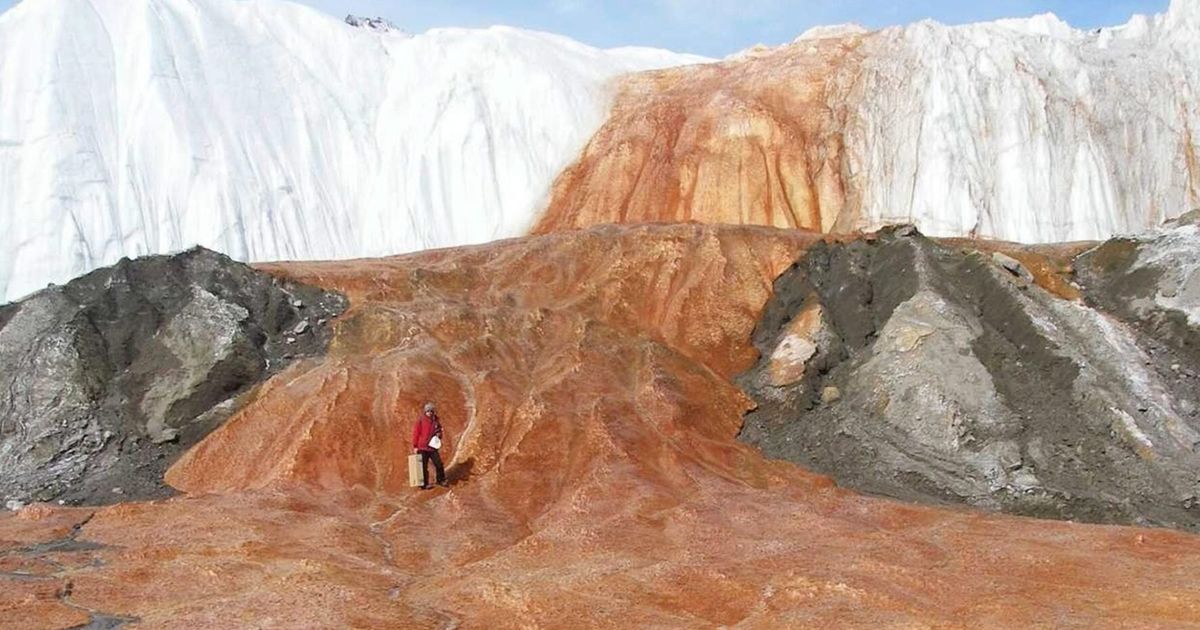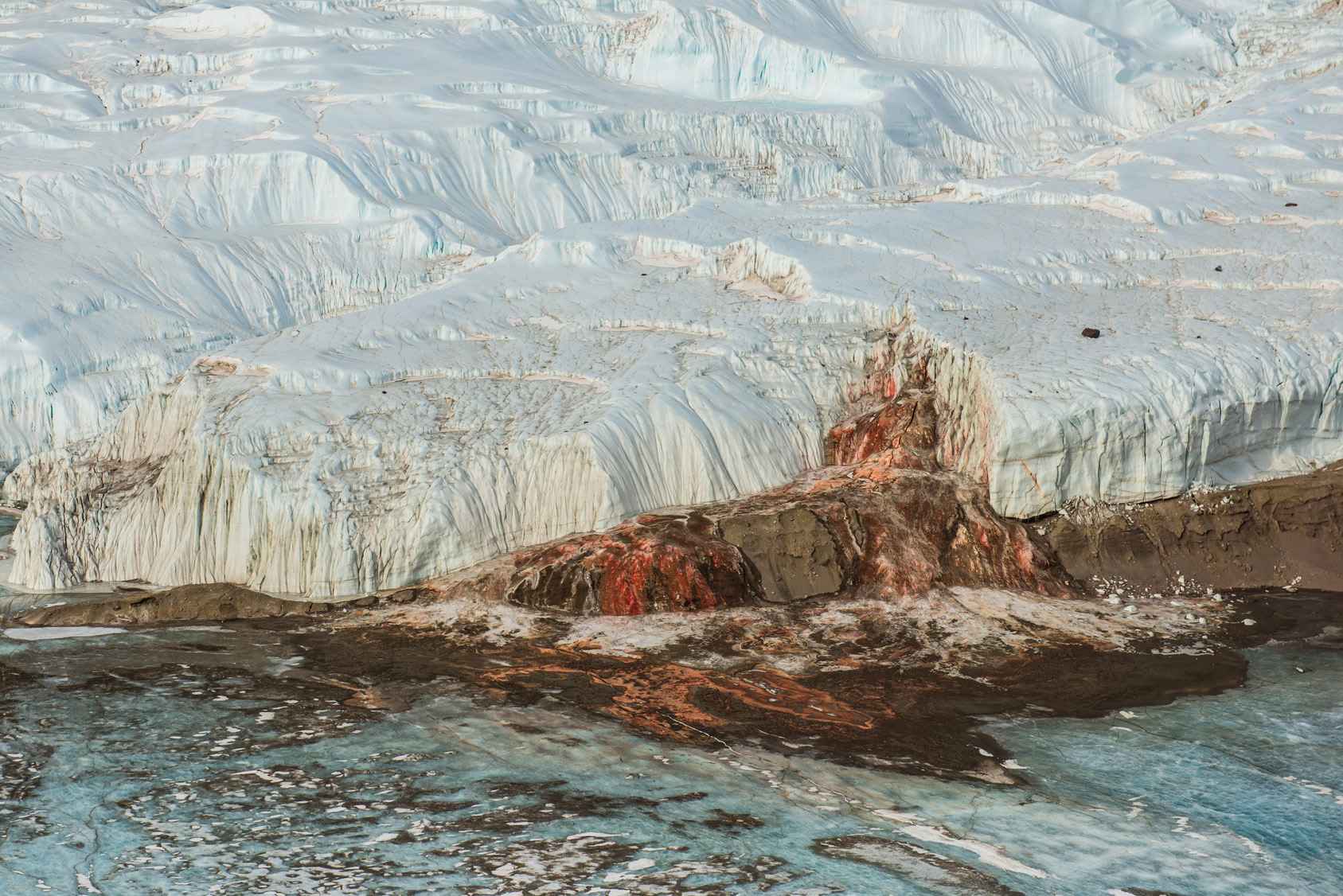Exploring Taylor Glacier’s Hidden Wonders: The Discovery of Blood Falls

Nestled amidst the icy expanse of Antarctica lies Taylor Glacier, a majestic frozen landscape that conceals one of nature’s most captivating mysteries – Blood Falls. This enigmatic phenomenon has long fascinated scientists and adventurers alike, drawing them to the remote reaches of the Earth in pursuit of understanding its secrets.

Located in the McMurdo Dry Valleys of East Antarctica, Taylor Glacier is renowned for its stunning beauty and extreme conditions. Yet, it’s the striking crimson hue of Blood Falls that truly sets it apart. Discovered over a century ago, in 1911, by Australian geologist Griffith Taylor during Robert Falcon Scott’s ill-fated Terra Nova Expedition, the falls have since captivated the imaginations of researchers worldwide.

Initially dubbed “Blood Falls” due to its eerie resemblance to a gory spill, the source of the crimson flow remained a subject of speculation for decades. It wasn’t until the latter half of the 20th century that scientists began to unravel the mystery behind this natural wonder.
Through rigorous scientific inquiry and technological advancements, researchers determined that the reddish hue of the falls is attributed to oxidized iron-rich brine water. Beneath the glacier lies a vast subglacial reservoir, where the water remains trapped, devoid of oxygen and shielded from light for millennia. As the brine seeps through fissures in the glacier and comes into contact with the oxygen-rich atmosphere, a chemical reaction occurs, causing the iron to oxidize and giving rise to the striking crimson coloration.

Beyond its captivating aesthetics, Blood Falls serves as a unique natural laboratory for studying extremophiles – microorganisms capable of surviving in extreme environments. These resilient organisms thrive in the subglacial brine, offering insights into the potential for life in similarly harsh conditions elsewhere in the universe.

In recent years, advancements in technology, including remote sensing and ice-penetrating radar, have enabled scientists to peer beneath the icy veil of Taylor Glacier with unprecedented clarity. Through interdisciplinary collaboration, researchers continue to unlock the secrets of Blood Falls, shedding light on Earth’s ancient past and the potential for life beyond our planet.
Exploring Taylor Glacier’s hidden wonders, particularly the discovery of Blood Falls, underscores the profound mysteries that lie beneath Antarctica’s frozen surface. As scientists delve deeper into this icy realm, they not only unravel the secrets of our planet’s past but also expand our understanding of the universe and the potential for life in the most extreme environments imaginable.



